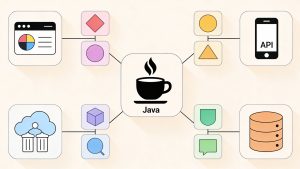Meta has introduced the Automated Compliance Hardening (ACH) tool, a cutting-edge solution powered by large language models (LLMs) to redefine software testing. Unlike traditional methods that focus primarily on code coverage, ACH takes a fault-centric approach, generating realistic code mutations and corresponding tests to enhance software reliability and security. This innovation marks a significant leap in automated software testing practices.
The Evolution of Automated Test Generation
For years, automated test generation techniques have aimed to maximize code coverage, assuming that broader coverage equates to better fault detection. However, this approach often falls short in identifying specific issues within the code. Meta’s ACH tool addresses this limitation by shifting the focus from generic coverage to targeted fault detection. By leveraging LLMs, ACH empowers engineers to define the types of faults they want to address using plain text descriptions—even if these descriptions are incomplete or contradictory.
How ACH Works
ACH employs a structured workflow that integrates mutation testing principles with advanced LLM capabilities. Mutation testing involves deliberately introducing controlled faults into the code to evaluate the robustness of a testing framework. ACH simplifies this process through three key LLM-based agents:
1. Fault Generator
The Fault Generator interprets engineers’ descriptions of potential issues and introduces simulated faults (mutants) into the source code. These faults are designed to mimic realistic scenarios that could compromise software functionality.
2. Equivalence Detector
To ensure efficiency, the Equivalence Detector checks whether newly introduced faults are semantically distinct from the original code. This prevents redundant mutations and streamlines the fault generation process.
3. Test Generator
Finally, the Test Generator creates test cases specifically tailored to identify and address the introduced faults. These tests not only detect issues but also provide actionable insights for resolving them.
ACH Workflow in Action
The ACH system begins with free-form text descriptions of potential issues, which can stem from various sources such as:
- Historical development faults.
- User requirements.
- Technical constraints.
- Regulatory compliance needs.
- Engineering concerns.
Using these descriptions, ACH generates realistic faults and corresponding tests to validate software integrity. This approach enables engineers to proactively address specific concerns while optimizing the overall test generation process.
Real-World Applications
Meta has successfully implemented the ACH tool across multiple platforms, including Facebook Feed, Instagram, Messenger, and WhatsApp. Early results demonstrate its ability to harden code against targeted concerns while delivering broader benefits in terms of efficiency and reliability.
Rajkumar S., a senior developer at SAP Labs India, praised ACH’s transformative impact on software testing:
“Automated Compliance Hardening (ACH) tool uses LLMs to revolutionize software testing by automatically generating both code mutations and the tests to catch them. A real game-changer for improving code reliability and efficiency.”
This testimonial underscores ACH’s potential to redefine industry standards in automated testing and compliance.
Benefits of ACH
- Enhanced Fault Detection: By focusing on specific issues rather than generic coverage, ACH improves fault detection accuracy.
- Streamlined Test Generation: The integration of LLMs automates complex processes, saving time and resources.
- Scalability: ACH is designed for deployment across large-scale systems, making it suitable for industrial applications.
- Proactive Compliance: Engineers can address regulatory and technical constraints more effectively through targeted fault generation.
Challenges and Future Directions
While promising, ACH is still evolving as Meta refines its methodologies for measuring mutant relevance and improving fault detection mechanisms. Future advancements may include:
- Expanding deployment across more platforms.
- Enhancing the precision of fault generation.
- Developing new metrics for evaluating test effectiveness.
Meta’s commitment to integrating LLM-powered tools into large-scale systems signals a broader shift toward AI-driven solutions in software development.
Conclusion
Meta’s Automated Compliance Hardening (ACH) tool represents a groundbreaking advancement in automated software testing. By leveraging LLMs for targeted fault generation and test creation, ACH addresses long-standing challenges in fault detection while optimizing workflows for engineers. As Meta continues to refine this technology, it has the potential to influence industry-wide practices in compliance, quality assurance, and software reliability.
With tools like ACH paving the way for more intelligent testing frameworks, the future of software development is poised for greater efficiency and precision—ensuring robust systems that meet both technical demands and user expectations.
Read more such articles from our Newsletter here.



